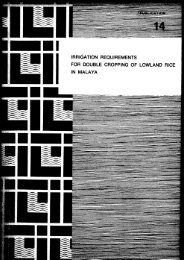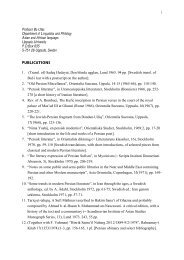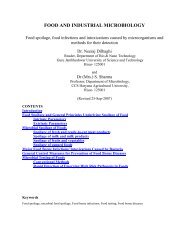On the Future of Indigenous Traditions - Munin
On the Future of Indigenous Traditions - Munin
On the Future of Indigenous Traditions - Munin
You also want an ePaper? Increase the reach of your titles
YUMPU automatically turns print PDFs into web optimized ePapers that Google loves.
identity was a stigma to keep <strong>the</strong>ir cultural and social distinctiveness. This<br />
distinctiveness based on <strong>the</strong>ir collective orientation (and <strong>the</strong>ir traditional institutions<br />
that represented <strong>the</strong>m) were under threat by <strong>the</strong> very nature and character <strong>of</strong><br />
individualistic pr<strong>of</strong>it and accumulation, causing overexploitation <strong>of</strong> <strong>the</strong> Adivasi<br />
people and <strong>the</strong>ir resources.<br />
The mega development projects (built on <strong>the</strong> “public interest”) by <strong>the</strong> state, with <strong>the</strong><br />
focus on industrial development and large scale exploitations <strong>of</strong> natural resources<br />
caused displacement <strong>of</strong> <strong>the</strong> Adivasi. Obviously, national development was <strong>the</strong> answer<br />
to <strong>the</strong> need <strong>of</strong> <strong>the</strong> hour after independence <strong>of</strong> <strong>the</strong> country. It still continues against<br />
Gandhi’s vision <strong>of</strong> self sufficient villages or <strong>the</strong> village as a unit to be <strong>the</strong> centre <strong>of</strong><br />
development. The bitter experience <strong>of</strong> displacement caused by such a development<br />
marks an un-healing scar on <strong>the</strong> displaced persons –usually <strong>the</strong> Adivasis. The Peraj<br />
displacement experience where Adivasis recovered less or none <strong>of</strong> <strong>the</strong>re land<br />
compared to <strong>the</strong> non-Adivasis who benefited more, shows that <strong>the</strong> Adivasis here not<br />
only have economic relations with <strong>the</strong> land and <strong>the</strong>ir surrounding, but a cultural and<br />
spiritual bond, <strong>the</strong> absence <strong>of</strong> which results in premature death, e.g. <strong>the</strong> case <strong>of</strong><br />
Lalbatti Murmu and some o<strong>the</strong>r Adivasis families illustrated in chapter two.<br />
In <strong>the</strong> context <strong>of</strong> Jharkhand, <strong>the</strong> caste groups are <strong>of</strong>ten said to be business oriented<br />
communities with pr<strong>of</strong>it being <strong>the</strong>ir goal (which is not only true for Jharkhand alone).<br />
In <strong>the</strong> light <strong>of</strong> <strong>the</strong>se different orientations <strong>the</strong> issue <strong>of</strong> special rights over equal rights<br />
comes up clearly in <strong>the</strong> court cases against PESA by members <strong>of</strong> caste groups. The<br />
opposition by Kurmi Mahtos and “O<strong>the</strong>r Backward Class” -OBC for <strong>the</strong> Adivasis’ to<br />
have special rights as against <strong>the</strong> equal rights, is an issue that comes up here. It is not<br />
only because this gives <strong>the</strong> Adivasis special “privileges” but it violates <strong>the</strong>ir equal<br />
citizenship rights when PESA reserves <strong>the</strong> chairpersons’ seat for <strong>the</strong> Adivasi in <strong>the</strong><br />
Gram Panchayat – <strong>the</strong> village council in <strong>the</strong> Scheduled districts. It is also because <strong>of</strong><br />
<strong>the</strong> two groups have different orientations <strong>of</strong> ‘caste’ and ‘tribe’. Kurmi Mahtos come<br />
from to <strong>the</strong> caste structure; <strong>the</strong>y were included in <strong>the</strong> Adivasi community in <strong>the</strong> later<br />
part <strong>of</strong> <strong>the</strong> Adivasis history in Jharkhand. It is <strong>the</strong> question coming from <strong>the</strong>m, which<br />
many o<strong>the</strong>rs would also ask, why should certain groups, e.g. ‘minorities’ indigenous<br />
have special rights than <strong>the</strong> rest? Jarle Weigård addresses <strong>the</strong> issues <strong>of</strong> rights in this<br />
context. He refers to Kymlicka and compares with Dworkin, and says:<br />
100

















